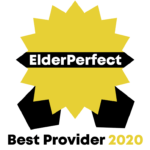What Is It?
If a person has trouble breathing, it is likely to affect many activities that he or she would normally be involved in. If someone becomes short of breath walking to the mailbox, that person will probably not walk to the mailbox very often or may give up that activity altogether. Breathing difficulty (known as pulmonary conditions) can be very frightening to people, and that fear and stress can make the problem even worse.
Breathing problems occur due to a variety of conditions such as pneumonia, emphysema, bronchitis, chronic obstructive pulmonary disease (COPD) and congestive heart failure (CHF), among others. In each of these, it is important to understand the basics of normal breathing. Air, which contains oxygen, comes into the body through the nose or mouth (inhalation) and goes into the lungs where the oxygen moves into the bloodstream. Blood pumped from the heart then carries oxygen to the cells throughout the body. The cells take the oxygen in exchange for carbon dioxide, which is carried in the blood back to the lungs to be removed from the bloodstream and then exhaled.
Chronic lung disease is dangerous because it causes this process of inhalation, exhalation and gas exchange to be disrupted. The person may not be able to clear harmful substances by coughing. Think about everything that a person does while breathing: walking, talking, eating, etc. Some activities such as speech and swallowing require breathing to stop. A person who is short of breath will speak in short rushes of speech and may lose weight if the fear of breathing difficulty is strong enough to prevent him or her from eating a complete meal.
Breathing difficulty also leads to fatigue. When breathing itself becomes hard work, it is the work that the person will choose to do rather than exercise, dressing, bathing, etc. You may find that people with chronic lung disease have become disabled because they stop doing so many other things for themselves.
How We Treat It
In partnership with Aegis Therapies, our trained rehabilitation staff works with people who have pulmonary conditions, which are often seen in combination with other disabling conditions as well. Breathing (pulmonary) and heart (cardiac) conditions often occur together. It is likely that this person will be treated in physical therapy, occupational therapy and speech-language pathology. Some areas addressed would be:
- Determining what makes the condition worse and developing a plan to avoid or manage those situations
- Teaching effective breathing techniques and strategies, such as diaphragmatic breathing, pursed-lip breathing and deep breathing
- Strengthening the muscles used in breathing
- Educating the person on simpler ways to perform activities in order to conserve energy
- Reducing stress through relaxation techniques
- Teaching effective cough techniques to clear secretions
- Designing a safe and effective physical exercise program
What You Can Expect
While breathing difficulty is a potentially life-threatening condition, there are a variety of ways to approach the disorder and improve quality of life. When the foundation function of breathing is improved, the person can then focus on improving other aspects of physical, social and emotional functioning.
Additional Resources
Pursed-Up Breathing
Indications: Shortness of breath associated with moderate to severe chronic obstructive pulmonary disease (COPD)
Goals:
- To promote controlled breathing at rest and with exercise
- To improve oxygen flow in the blood
- To decrease the work of upper chest muscles in breathing
- To reduce the amount of air trapped in the lungs
Procedure:
- Get into a comfortable and relaxed position.
- Take in a normal size breath through your nose to the count of 2.
- Purse your lips, creating a wide, thin slit.
- The breathe out slowly to a count of 4. Exhale in a relaxed way. You can hold your hand in front of your mouth to feel the even, relaxed flow of air.
Note: This technique is not appropriate for persons who have tracheostomies.




